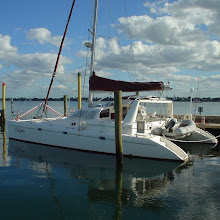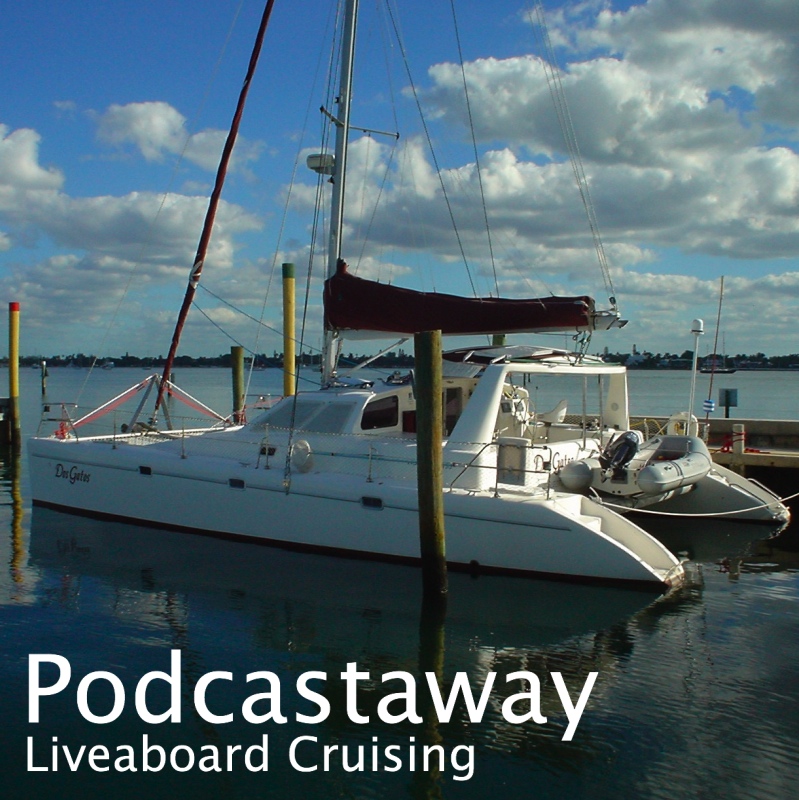
Last Saturday we got two phone messages suggesting that we call the marina in Bundaberg as there was "a situation" with Dos Gatos. It turned out that the Burnett River was in flood - due to the huge amount of rain that southern Queensland has received - and many of the boats and moorings had washed away down the river! Dos Gatos had apparently dragged its mooring 200 yards before coming to a halt - one of very few boats to come to a halt!
We immediately drove north to Brisbane (300km), to be within train range, and Martin took a trip back to check on the boat.
Dos Gatos had been tied alongside a scallop trawler and was only moderately damaged. The starboard bow has some cracks and gouges - well above the waterline - and there are scuffs on both sides, presumably due to contact with other boats. Everyone said how lucky we were!
She was then moved - so the trawler could go trawling - and is now tied between a marina finger and the separate trawler maintenance pier. (see pic above.) The marina staff will move her back out onto a mooring when the river rate of flow reduces such that the remaining mooring buoys pop back to the surface - they are currently invisible under water! They will probably have lost some, but won't know which ones until then.
All the boats on the moorings have reportedly been accounted for. None sank and none have major damage. However, one boater was badly injured when he was crushed between two boats while trying to free trapped weed. It's the huge amount of water hyacinth washed down the river in flood that causes the problems. It builds up on boats, buoys and lines and greatly increases loads. That's when things fail.
So, Dos Gatos is safe again. We were lucky, anything can happen when a boat breaks free. Having said that, we now have hundreds of dollars in repairs for our next haul out.
Still, on with the road trip!
 "The Snowy Mountains Scheme is undoubtedly one of the civil engineering wonders of the modern world. Built over a 25 year period from 1949 to 1974, it diverts water for irrigation west to the Murray and Murrumbidgee river systems and produces clean, renewable, hydro electricity through a complex integrated infrastructure which includes sixteen major dams, seven major power stations, 145km of interconnected tunnels and 80km of aqueducts."
"The Snowy Mountains Scheme is undoubtedly one of the civil engineering wonders of the modern world. Built over a 25 year period from 1949 to 1974, it diverts water for irrigation west to the Murray and Murrumbidgee river systems and produces clean, renewable, hydro electricity through a complex integrated infrastructure which includes sixteen major dams, seven major power stations, 145km of interconnected tunnels and 80km of aqueducts."






 (Atom)
(Atom)